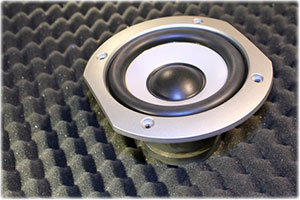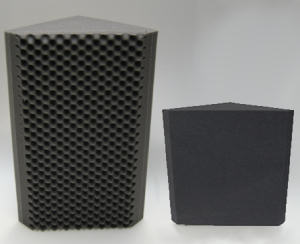Acoustic soundproofing foam guide
|
Acoustic foam is a specialised foam used for sound proofing. It is typically an open celled foam which works by increasing air resistance so that sound waves are reduced in amplitude. The sound energy is then dissipated as heat. Acoustic foam comes in a variety of sizes, shapes and thicknesses and is usually attached to walls, ceilings, doors and other room features to control noise levels. It can also be strategically placed in certain environments (e.g. halls, recording studios) to improve sound quality and reduce echoes. It is commonly used in recording environments such as studios to enhance the quality of the recorded sound by removing unwanted background noise, reverberation, reflections and flutter echoes. Acoustic foam often comes in sheets or panels and may have self adhesive backing for easy installation. A convoluted pattern (egg crate pattern) is often used for added sound absorbing qualities, but flat style is also common. Other common acoustic foam products are bass traps and corner kits. Bass traps are large foam wedges which are designed to absorb low frequency sound. Corner kits are a set of bass traps fitted to room corners. Bass traps can have a convoluted or flat surface. This video provides a good demonstration of how acoustic foam can treat a room: https://www.youtube.com/watch?v=26Ao9uQTlj4 Here is an example of music recorded in a room treated with acoustic foam, the quality of the recording sounds professional despite the domestic setting: https://youtu.be/vdCNr-1FFTw |
  Examples of a convoluted and flat bass trap. Image taken from e foam |